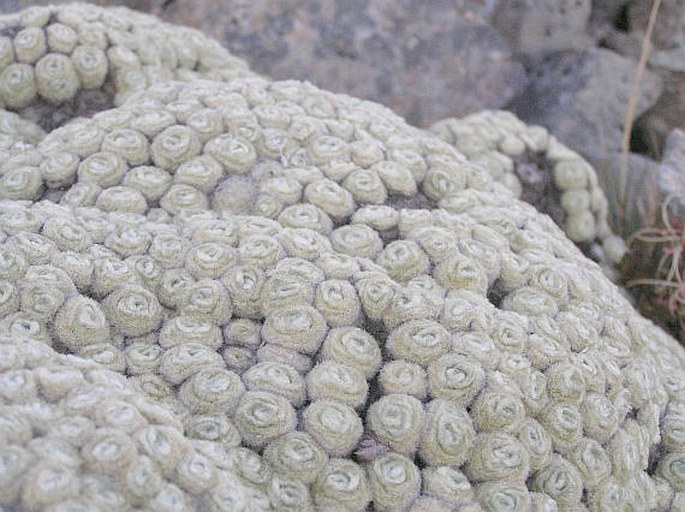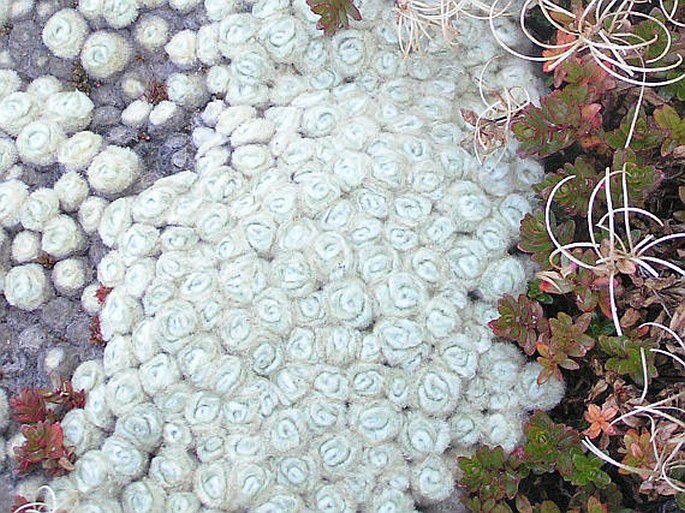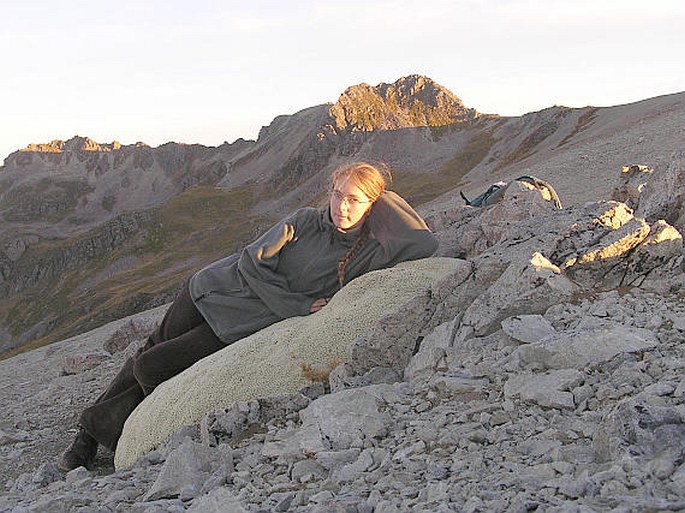Family: Asteraceae Bercht. et J. Presl

Distribution: Haastia is an endemic genus of New Zealand which for now includes three species. Found throughout the mountains of Nelson and Marlborough.
Ecology: It grows strictly in an alpine zone, but needs longer vegetation season without snow and more stabile temperature than can offer european mountains.
Description: From distance they look like living stones or sheep. This cushion-forming herb have leaves (8–10 mm long) densely covered with tawny hairs. Old plants can be 2 m across, but occasionally larger. The flowers appear during January and February and lack ray florets of the the typical daisy flower. The seed has fluffy pappus hairs which cause the ripe seed to blow away. Good seed is fat and brown.
Mismatch: Var. pulvinaris is yellow or golden in a appearance and bigger in all its parts than var. minor, var. minor is more green in appearance its hairs are shorter so that the individual leaves are more obvious. Similar (another famous „vegetable sheep“) Raoulia eximia is easy to recognize due its pentagonal (sometimes tetra- or hexagonal) shape of herbs and whitish blue-gray colour.
Note: Special cusion composition is good protection against herbivors, competitors and soil evaporation.


These images were taken in New Zealand, NP Nelson Lakes (May 28, 2007).


